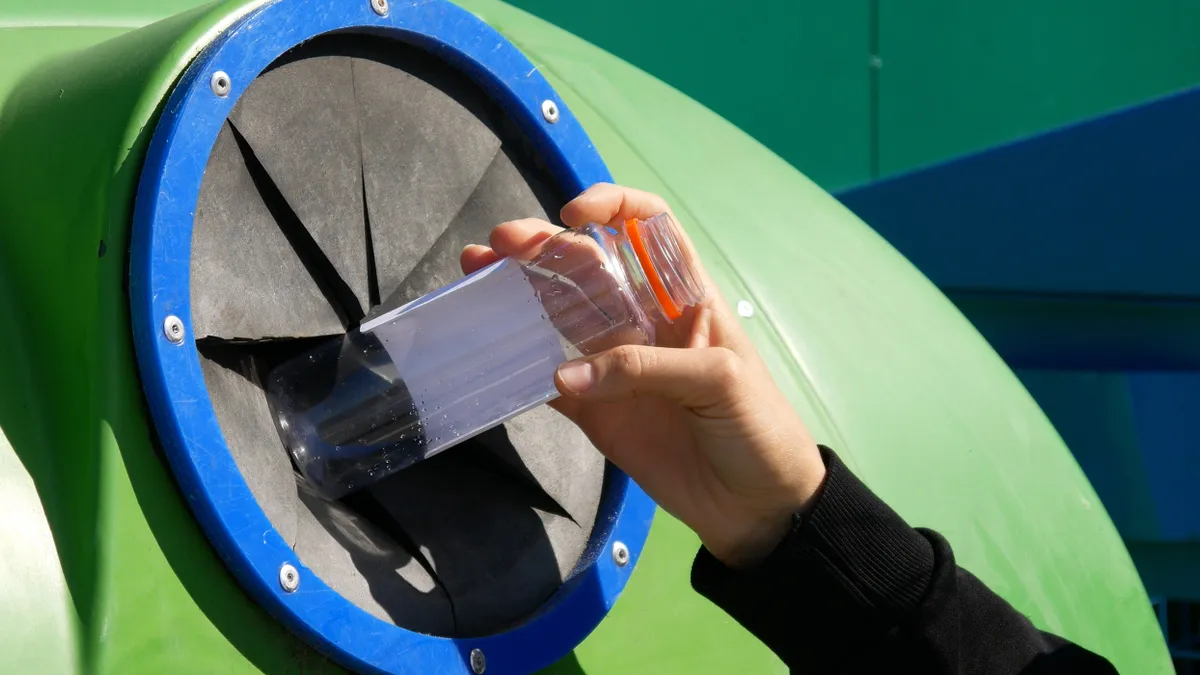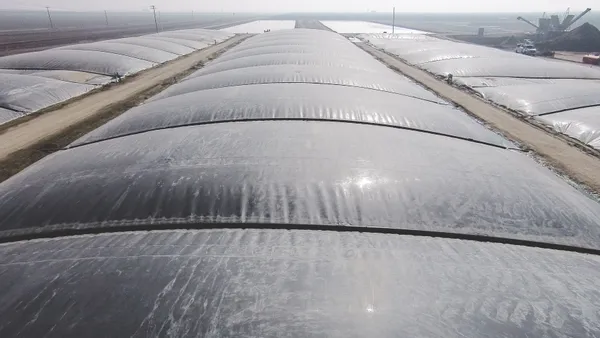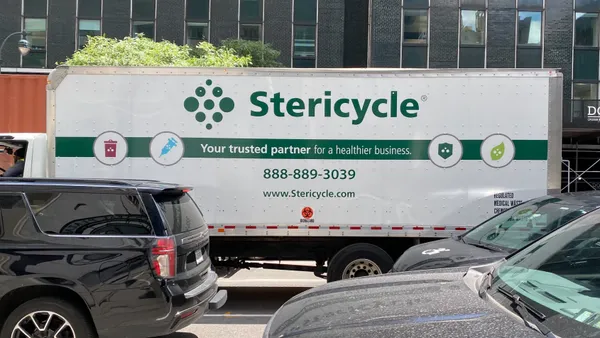Dive Brief:
- California-based startup Replenysh is looking to reach more municipalities that lack robust recycling infrastructure as it seeks to grow its network of recycled material suppliers and buyers. The company shares software and know-how with localities so they can create high-quality recycling collection sites, and it ultimately facilitates the sale of collected materials to retailers.
- On the supply side, the company’s near-term aim is to expand collection in smaller, more rural communities without recycling programs, executives said. The company recently convened an 8-week “Circularity Cohort” of representatives from a dozen communities from around the U.S. that are facing some of the same recycling access and cost challenges and introduced participants to its technology to accelerate adoption.
- On the demand side, it’s seeking to connect with more retailers and brand owners in need of a range of materials and recycled content. Companies that have previously announced programs with Replenysh include Proud Source Water, Ball Corporation and PepsiCo.
Dive Insight:
Since the wave of cuts to curbside programs following policy changes in China and pandemic disruptions, numerous piecemeal recycling collection solutions have emerged for communities that lost their recycling programs or never had one to begin with.
One widely known example is Recyclops, which offers a subscription-based pickup service to residents in many underserved communities.
Replenysh’s model involves charging the demand side rather than a municipality or residents who sign up for a service, founder Mark Armen explained.
Replenysh says it gives municipalities its technology at no cost and the company’s revenue primarily comes from sharing it with brands buying the material. The “front end” consumer-facing piece of that technology can inform residents on where they can take materials and how to know the difference between different types of plastics, among other capabilities. On the “back end,” the technology connects material with local operators and tracks material after it’s collected.
Material is baled locally and transported to material-specific mills, which then provide recycled feedstock back to brand partners and their vendors. Replenysh usually takes a varying percentage of the money from the commodity sales, and municipalities can generate revenue from the system as well.
More and more brands have recycled content or circularity goals today, said Armen, but “we bury or burn the majority of the [recyclable] material that we generate in this country and abroad. So how do we activate supply?”
One state where Replenysh has expanded its footprint is Oklahoma. The city of Bartlesville, for example, started collecting material at drop-off sites in partnership with the company last October; to date it has collected over 468,000 pounds of material.
Among the communities that engaged in the recent cohort was Jackson, Mississippi, a city of around 150,000 people that has been without recycling since 2019. Keelan Sanders, executive director at Keep Jackson Beautiful, said the nonprofit city partner intends to start using the Replenysh system in September with 10 initial drop-off sites and a goal of scaling up to as many as 100 sites. While Jackson’s previous recycling program only served some residents, Sanders is optimistic that this model will also serve commercial businesses and apartment complexes. If Jackson does relaunch curbside recycling in the future, the Replenysh offering could still complement it, Sanders said.
Staunton, Virginia, also participated in the cohort. The city, home to around 26,000 people, ended curbside recycling last spring but has drop-off sites. Staunton isn’t ready at this time to adopt Replenysh’s system, said Public Works Director Jeff Johnston. It is still deciding how it wants to move forward on recycling and wants to keep open the possibility of launching a comprehensive curbside program, Johnston said.
Armen said the company’s goals also include raising more capital, targeting multifamily housing as another source of untapped supply, and helping retailers — which may represent both supply and demand — achieve circular supply chains.











